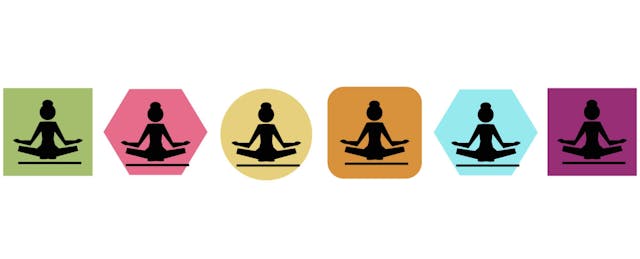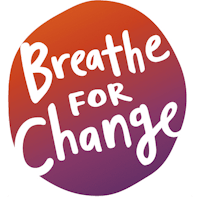When Tammy ThompsonKapp was Principal of Lapham Elementary School in Wisconsin, she and her staff struggled to help students who came to school hungry, tired or coping with mental health issues. With tears in their eyes and frustration in their voices, teachers arrived at ThompsonKapp's office daily, seeking support. The emotional toll was overwhelming.
ThompsonKapp worked long hours and buried herself in unhealthy and unrealistic pressures to help her school. And she worried—about her teachers, her students and, eventually, herself. Then, a teacher introduced her to Breathe For Change, a movement created in 2015 by Founder and CEO Dr. Ilana Nankin to enhance the health and well-being of teachers, students and entire school communities.
Through yoga, mindfulness and social-emotional learning exercises, educators at Lapham, including ThompsonKapp, learned strategies to help reduce stress, prioritize self-care, cultivate resilience and enhance their well-being.
They also learned to model and teach their students social-emotional skills through the program's SEL*F curriculum and training (which integrates CASEL's SEL competencies). This, in turn, improved students’ well-being.
We talked with ThompsonKapp about how Breathe For Change led her to take a fresh approach to both her personal and professional lives—including a decision to become principal at Stoner Prairie Elementary. Learn how she implemented the program there, the impact she's seeing and why she feels other schools should follow suit.
EdSurge: How did Breathe For Change impact you personally?
Tammy ThompsonKapp: When I started at Lapham, I thought I needed to be the first car in the parking lot and the last car that left. I worked on weekends, checked my email until midnight. I thought those were things I needed to do as the building principal. I was unable to separate myself from work. When things were challenging, I let them live within me.
Now, I'm in a very different place for two reasons: I have gone through the Breathe For Change 200-hour Wellness, SEL and Yoga Teacher Training myself, and, at Stoner Prairie, 10 other members of my team have gone through the 200 hours of training. That's 11 certified yoga teachers and Wellness Champions, all supporting each other. They keep me grounded and focused in times of struggle and remind me why this work is so important.
Before the program, I didn't practice meditation or yoga. I knew the benefits, but if I'm being honest, when I was at Lapham, I started the school-wide professional development program more for my teachers. Once I embraced the ideas of self-care and mindfulness, I began to redefine who I was. And, although leaving my teachers and students at Lapham was one of the most difficult things I’ve had to do professionally, I decided that starting at a new school would allow me to set better boundaries for myself.
And now, I find many more opportunities to just be Tammy instead of always being a principal.

What does practicing mindfulness look like at Stoner Prairie?
I am continually messaging that, before we can be kind to other people, we first have to show self-love and kindness to ourselves.
We have Mindful Monday—an all-school community breakfast—and I lead the entire school in a breathing exercise or meditation. That sets the tone for our week. We also have an all-staff professional learning community; we start every meeting with meditation or breathing.
This past summer, our Parent Teacher Organization awarded us a $2,000 grant, and we created a mindfulness room at Stoner Prairie. It’s a full-size classroom outfitted with low lighting, 40 yoga mats, bolsters and blocks. It's a beautiful space for staff and students.

It's reserved for staff before school, at lunchtime and after school. They can access it however they choose—yoga led by a Breathe For Change graduate or a mindfulness app playing.
For students, every class has a daily 30-minute session in the mindfulness room. Our goal is to build capacity for all teachers to feel comfortable and confident leading mindfulness on their own. In the meantime, our school counselor coordinates. This is a new approach, which can feel overwhelming, so we provide intentional support to ensure all students and staff experience the benefits of mindful practices.
It all adds up to teachers, students and staff having a common language and a consistent approach to interacting with each other. When everyone is talking to kids using the same language, navigating school isn't impossible for children. And teachers feel like they are supported and cared about.

What changes are you seeing in teachers and students?
Breathe For Change gives us opportunities to show gratitude to one another and learn how to communicate effectively. It also helps us understand how we think and work differently from one another.
If you've ever had someone tell you to “just calm down,” you know it doesn't help. Here at Stoner Prairie, we go through steps where we stop, name our feelings, and then we calm down by breathing, counting, or using positive self-talk. We follow problem-solving steps, so we're very intentional: say the problem, think of solutions, explore consequences and then pick the best solution. Those are all fundamentals of Breathe For Change and the Second Step curriculum we use to teach social-emotional learning.
It's difficult to quantify, but if you're here, you feel it, and you see it. I hear kids saying to each other, "It's going to be okay. Take a breath." I had two fifth-graders get off the bus earlier this year and say, "We helped solve a problem on the bus this morning, and it was so great. A brother and sister were fighting, and we said, 'First, take a breath, and let's think about how the other person is feeling.’" I love that!
Academics are important, and we want kids to achieve at high levels. But they also need to be kind, accepting, have empathy for one another and a sense of belonging. I feel all those things here with our kids and our staff.
With those changes in place, we saw a decrease in office discipline referrals from the start of the year to the end of the year. And we're definitely seeing fewer behavior referrals at the beginning of this year than last year.

What advice do you have for other education leaders who want to improve teachers' well-being?
The Breathe For Change movement can be scary to leaders because it means pushing outside of our comfort zone and being vulnerable. And we have to ask our staff to be vulnerable. But I would say, don't be afraid to try—and don't expect to be perfect.
There may be teachers who resist. During the entire first professional development session we had at Lapham, one teacher sat with her arms crossed defiantly. But by the end of the year, she integrated mindfulness strategies into her classroom more effectively than anyone else (and she bought her first pair of yoga pants).
You'll have challenges; we still have them. But we fall back on the support of one another. Every day, I get a hug from a staff member or multiple kids. And while I know love isn't enough, leading with love is the place to start. Love provides the roots for change.
Give YOUrself the Gift of Self-Care!
As you enter into this season of giving, give yourself the incredible gift of your own self-care by becoming a Breathe For Change Wellness Champion in 2020. And enhance teacher well-being in your community by inviting amazing educators in your network to join the Breathe For Change movement!
- Breathe For Change’s 200-hour Wellness, SEL and Yoga Teacher Trainings for Educators - Graduates are eligible to receive a Yoga Alliance 200-hour Yoga Teacher Certification (CYT 200) and Breathe For Change’s Wellness Champion Certification. CEUs and grad credits are also available.
- Register for B4C’s Free ChangeMaker Program to access free wellness and SEL*F resources, lesson plans, and PD webinars, facilitated by Dr. Ilana Nankin, Founder & CEO
- Bring Wellness and SEL Professional Development to your school, district, or organization.



